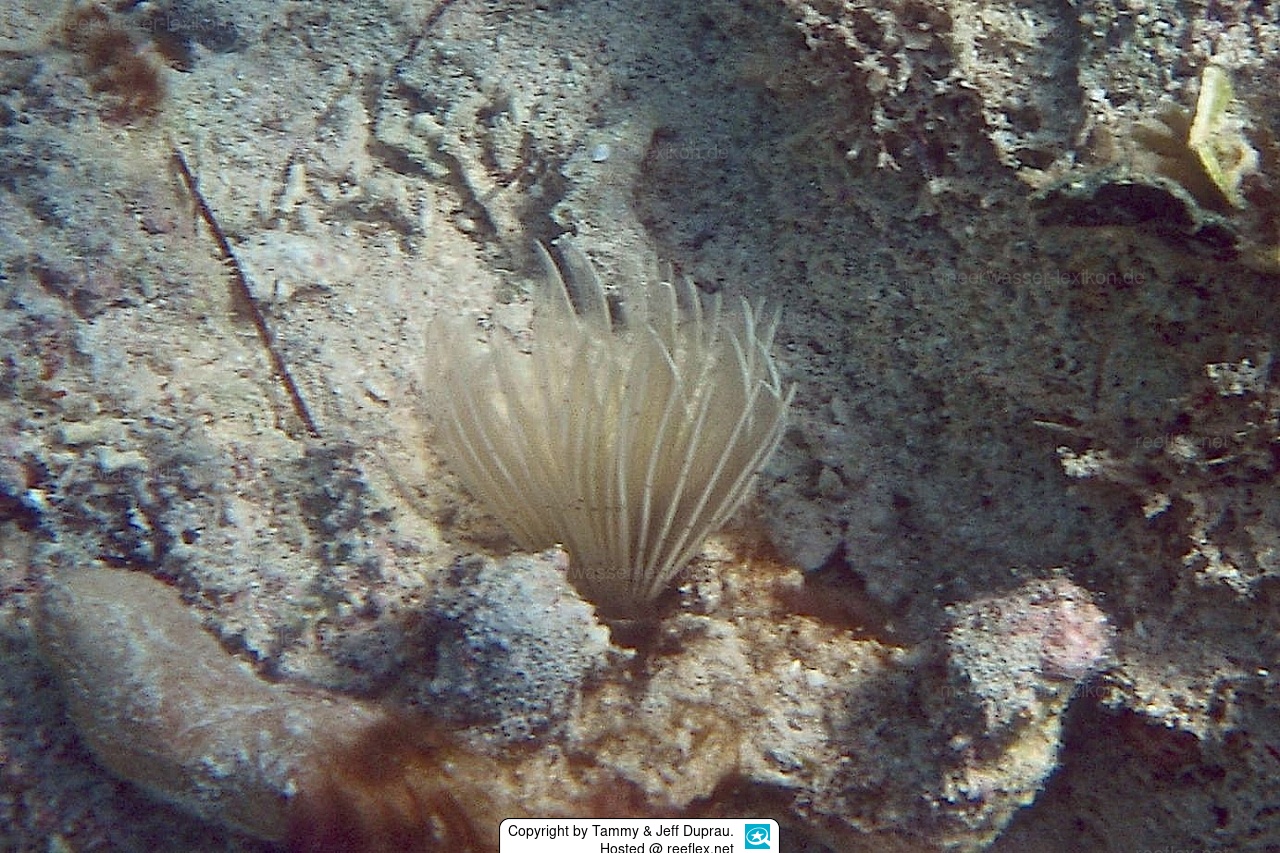Info
Anamobaea phyllisae Tovar-Hernandez & Salazar-Vallejo, 2006
The tubeworm Anamobaea phyllisae is found only in a few places in the Caribbean, it was first described in 2006 from the British Virgin Islands.In the photo only the pale tentacular corolla can be seen.
Tubeworms are rarely maintained permanently in the aquarium; they require a continuous influx of plankton, dust foods, cyclop eeze, and copepods.However, the influx of nutrients increases phosphate levels in the aquarium.
Etymology:
This species is named in honor of Dr. Phyllis Knight-Jones (Univ. of Swansea, UK) in recognition of her many years of dedication to the taxonomy of sabellid polychaete.
The tubeworm Anamobaea phyllisae is found only in a few places in the Caribbean, it was first described in 2006 from the British Virgin Islands.In the photo only the pale tentacular corolla can be seen.
Tubeworms are rarely maintained permanently in the aquarium; they require a continuous influx of plankton, dust foods, cyclop eeze, and copepods.However, the influx of nutrients increases phosphate levels in the aquarium.
Etymology:
This species is named in honor of Dr. Phyllis Knight-Jones (Univ. of Swansea, UK) in recognition of her many years of dedication to the taxonomy of sabellid polychaete.







 Tammy & Jeff Duprau
Tammy & Jeff Duprau


